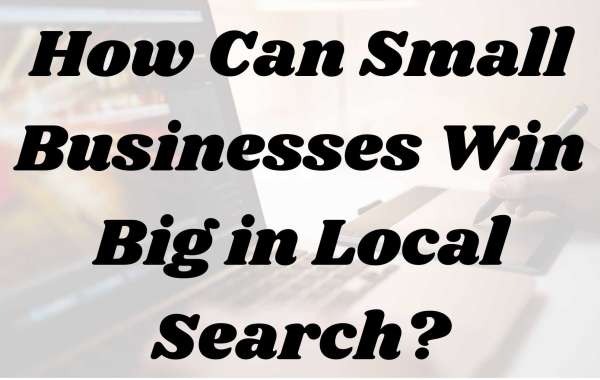In the ever-evolving digital landscape, small businesses are often portrayed as the underdogs—scrappy, ambitious, and perpetually outpaced by their bigger, budget-blessed competitors. But what if the real story isn’t about being outspent… but outsmarting?
Welcome to the world of local search—where the right strategy can catapult your neighborhood café, boutique agency, or corner bookshop into the digital spotlight. In this blog, we’re pulling back the curtain on what it really takes for small businesses to win big in local search. No fluff, no jargon-heavy pitches—just truth, tactics, and the kind of insight most agencies won’t tell you for free.
What Is Local Search, Really?
Let’s clear the air. Local search isn’t just “showing up on Google.” It’s about being found when someone nearby needs exactly what you offer. Whether it’s “best Thai food near me,” “emergency plumber in Oxford,” or “eco-friendly shoe shop downtown,” local search bridges the gap between digital queries and physical customers.
Unlike national SEO—which is often a long, uphill battle—local search favors relevance, proximity, and authenticity. If you're a small business with a local presence, this is your playing field. And trust us, the game is winnable.
Why Local Search Is No Longer Optional
Here’s the headline: 76% of people who search for something nearby visit a related business within a day. Let that sink in.
Local search is the heartbeat of real-time consumer intent. It’s what guides people when they’re ready to act—not just browse. For small businesses, it’s no longer a bonus strategy. It’s survival.
And in a post-pandemic world where people crave connection, community, and convenience, local search has only grown more relevant. Your customers are out there. But if you’re not in their search results, you don’t exist.
The Local Search Ecosystem Explained
Understanding local search means understanding the ecosystem it runs on. It’s not just about Google, although Google does dominate. Here’s the stack:
- Google Business Profile (GBP): Formerly Google My Business, this is ground zero for local SEO. An optimized GBP is often the first impression you make.
- Local Pack and Map Pack: The top 3 local results that show up with a map. This is prime real estate.
- Local Citations: Mentions of your business across directories like Yelp, Bing Places, Apple Maps, TripAdvisor.
- NAP Consistency: Your Name, Address, Phone Number. If it’s inconsistent across platforms, your ranking takes a hit.
- On-Page SEO: Your website still matters. Meta tags, local keywords, schema markup—they all feed into the algorithm.
- Reviews and Reputation: Think of reviews as currency. And yes, Google reads them.
Knowing how each element influences your visibility isn’t just helpful—it’s essential.
The Big Local SEO Myths (And the Truths That Replace Them)
Let’s debunk some of the most common local SEO myths that still trip up small business owners.
Myth #1: “I don’t need SEO; word of mouth is enough.”
Truth: Word of mouth may have legs, but it doesn’t scale like a search result. People may hear about you—but they’ll still Google you.
Myth #2: “If I run Google Ads, I’ll automatically rank high.”
Truth: Paid ads and organic results are separate. Ads might boost visibility, but they don’t help your organic local rankings.
Myth #3: “I need thousands of reviews to rank.”
Truth: Quality trumps quantity. A few well-written, keyword-rich, and recent reviews can do more than 200 generic ones.
Myth #4: “SEO is a one-time task.”
Truth: It’s an ongoing process. Algorithms change, competitors evolve, and customer behavior shifts.
Believing myths keeps you stagnant. Knowing the truth helps you move.
Google Business Profile: Your Digital Storefront
If your GBP isn’t optimized, it’s like having a storefront with no sign.
Start by claiming your listing. It’s free—but don’t treat it like an afterthought. Fill out every section: business hours, service area, business categories, photos, and Q&As. Regularly post updates. Use local keywords in your descriptions.
Pro tip: Add high-quality images taken from your actual location, and encourage customers to tag your business when they post. It boosts visibility and signals authenticity.
And here’s something many don’t realize—GBP listings often rank above websites in local results. So yes, this really matters.
Why Consistency in NAP Is Non-Negotiable
Search engines cross-reference your business across the web. If your business name is listed one way on your website and another on Yelp—or worse, your address is outdated—Google gets confused.
Confused Google = poor rankings.
Do a full audit. Clean up your citations across all platforms. It may seem tedious, but it’s foundational to your success. Use tools like Moz Local, Yext, or BrightLocal to track this.
Website Optimization: Make It Local and Logical
Your website should reflect your local intent. That means:
- Including your city or neighborhood in key areas (title tags, H1s, meta descriptions)
- Creating location-specific landing pages if you serve multiple areas
- Embedding Google Maps and schema markup for local business
Also, think UX. A slow, clunky, non-mobile-friendly site won’t just annoy users—it’ll cost you rankings. Google prioritizes websites that offer a seamless user experience.
Reviews: The Unsung Heroes of Local SEO
A 5-star rating might look pretty, but the real power is in the content of your reviews.
Encourage happy customers to be descriptive. “Great service” is nice. “The best vegan lasagna in Oxford, with friendly staff and cozy vibes” is SEO gold.
Respond to every review—yes, even the negative ones. Show your humanity. Own up when something goes wrong. These replies build trust—not just with the reviewer, but with future customers and search engines.
Oh, and fake reviews? Google’s catching on. Don’t play that game.
The Role of Local Links and Community Engagement
In the world of backlinks, local links are king for small businesses.
That could mean:
- Getting mentioned on local news sites
- Sponsoring a charity run and earning a link on their site
- Guest blogging for a community newsletter
- Partnering with neighboring businesses
Local links tell search engines that you’re embedded in the community—and that boosts your relevance and trustworthiness.
Also, don’t underestimate the offline to online loop. Host an event, encourage attendees to tag your business online, and turn real-world moments into digital signals.
Mobile and Voice Search: The New Frontiers
More than 60% of all local searches come from mobile devices. And voice searches? They’re growing fast.
This isn’t just a trend. It’s a shift in behavior.
If your website isn’t mobile-optimized, you’re losing traffic—period. If your content doesn’t answer conversational queries (“Where can I buy gluten-free pizza near me?”), you’re missing out on voice traffic.
Local search is increasingly about context. Think like a consumer on the go—and optimize accordingly.
Tracking What Matters: Metrics Beyond Rankings
Ranking is just one piece of the puzzle. What matters more?
- Click-through rates from your GBP and website
- Calls and direction requests from your listings
- Reviews and ratings trend over time
- Traffic by location
- Conversion rate from local landing pages
Use tools like Google Analytics, Search Console, and GBP Insights to track performance. Because if you’re not measuring, you’re guessing.
The Competitive Edge for Small Businesses
Here’s the twist: big businesses often fail at local SEO.
Their scale works against them—they’re too generic, too templated, too slow to adapt. That’s your opening.
You, the small business owner, have what they don’t:
- Local knowledge
- Community roots
- Authenticity
- Agility
These aren’t soft assets. They’re ranking signals. And when harnessed properly, they help you punch above your digital weight.
What Winning Looks Like
Winning in local search isn’t just a vanity ranking. It’s foot traffic. Phone calls. Bookings. Sales.
It’s the 7 PM customer who walked in because you ranked first when they searched “open late barbers near me.” It’s the bride-to-be who found your boutique after Googling “vintage wedding dresses in Oxford.”
It’s not magic. It’s strategy. It’s work. But it’s worth it.
Action Plan: Your 10-Step Local SEO Checklist
Let’s get tactical. Here’s your cheat sheet:
- Claim and optimize your Google Business Profile
- Ensure NAP consistency across all platforms
- Collect genuine, keyword-rich reviews
- Optimize your website for local keywords and fast mobile loading
- Build local backlinks and community mentions
- Create location-specific landing pages if needed
- Add structured data (schema markup) to your website
- Post regularly on your GBP with updates and events
- Track performance and adjust based on data
- Engage with your local audience—online and offline
No shortcuts. No gimmicks. Just smart, sustained effort.
Conclusion: The Future Belongs to the Local Players
In an age where digital giants dominate headlines, the true story unfolding is far more democratic. Local search has leveled the field. And for small businesses with courage, creativity, and consistency, the opportunities are massive.
Local SEO isn’t about gaming the system—it’s about understanding the system and showing up where it counts.
You don’t need to outspend the competition. You just need to outlocal them. Because at the end of the day, when someone in your area is searching for what you offer, you deserve to be found.
And if you’re looking for a partner to help you navigate the path, expert SEO services Oxford can make that local win a whole lot easier—and a lot more rewarding.






